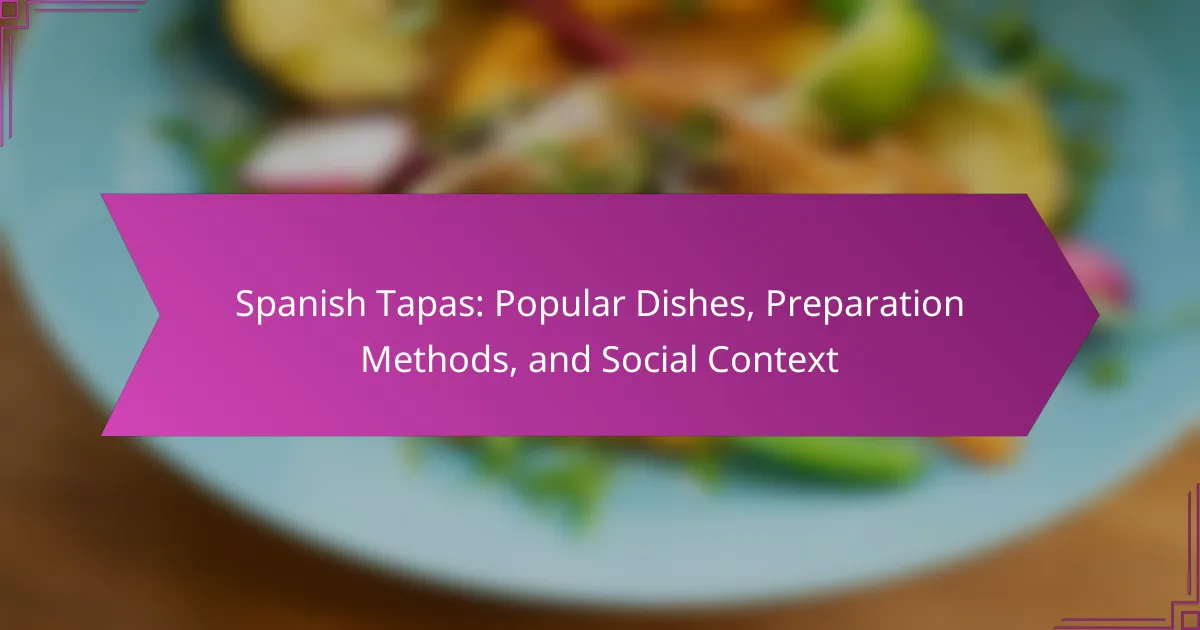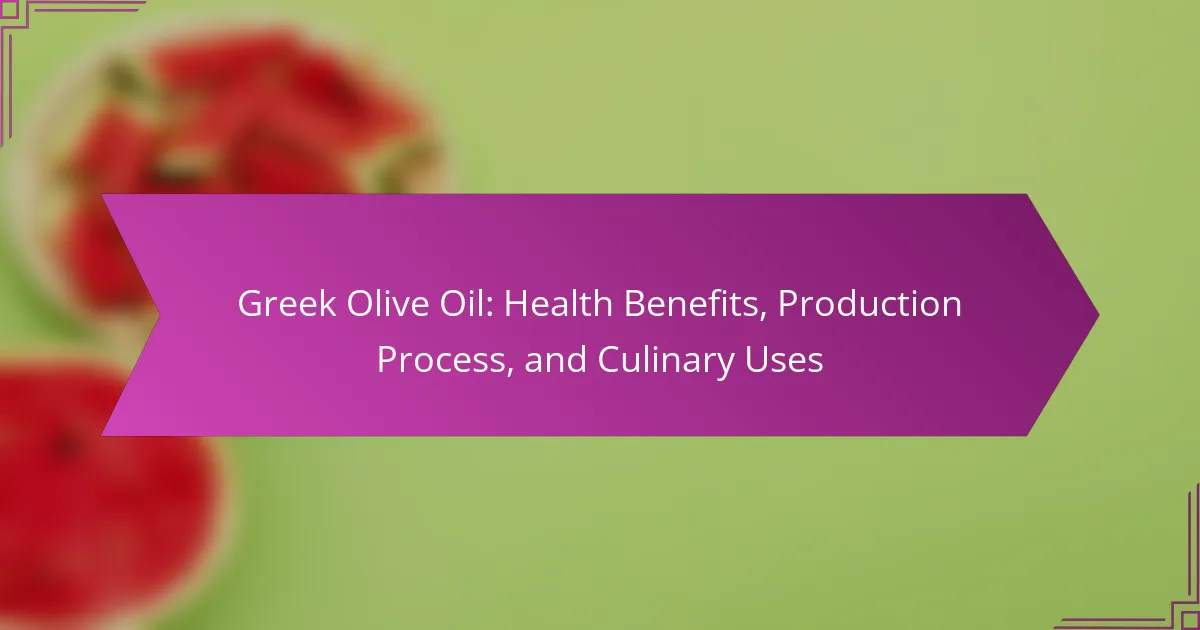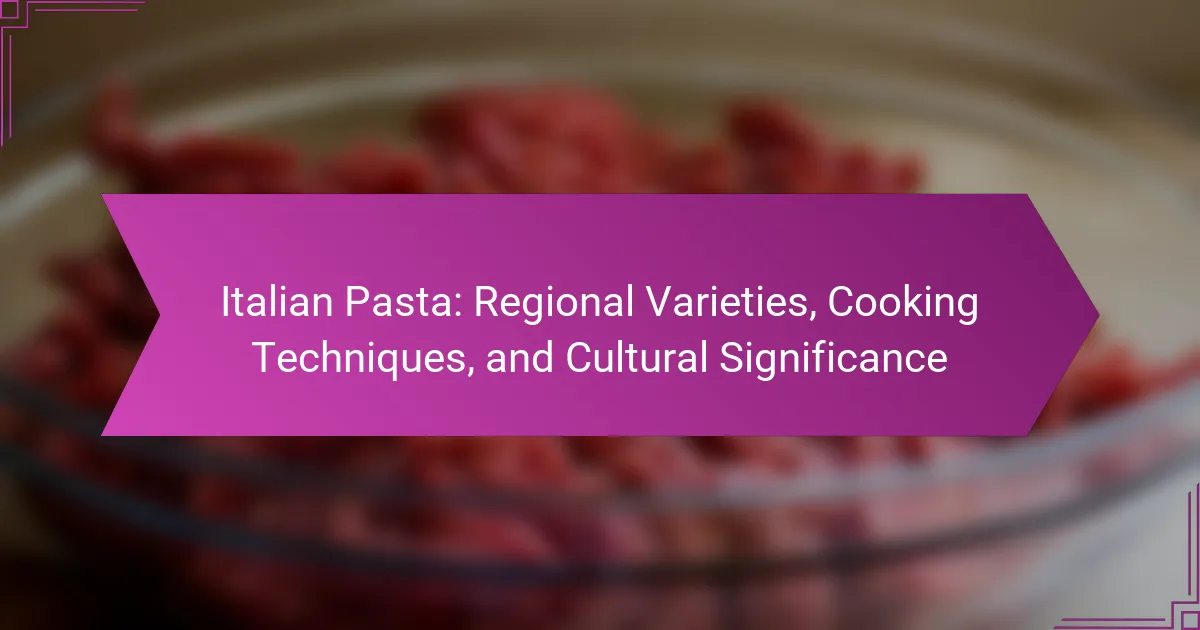Discover the vibrant world of Portuguese seafood, celebrated for its fresh ingredients and diverse cooking styles. Explore traditional dishes like bacalhau and caldeirada, along with regional variations that highlight local flavors. Learn about modern adaptations and the health benefits of these culinary treasures, while avoiding common preparation mistakes. Engage with resources to deepen your understanding of this rich seafood culture.
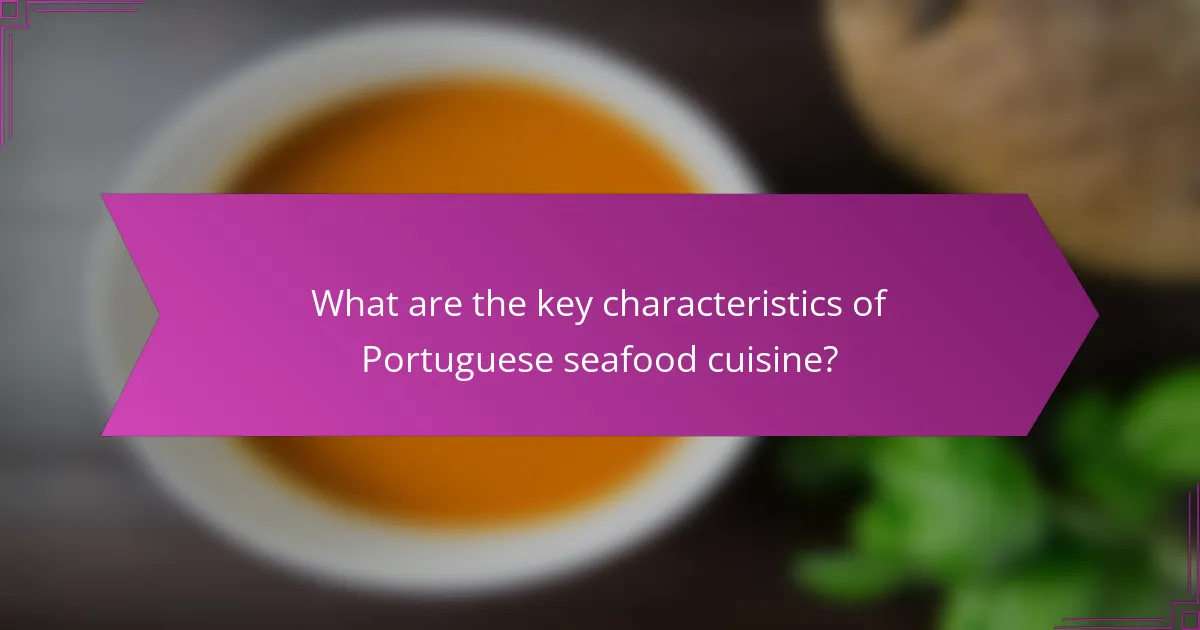
What are the key characteristics of Portuguese seafood cuisine?
Portuguese seafood cuisine is characterized by its fresh ingredients, diverse cooking methods, and regional specialties. Key characteristics include the use of olive oil, garlic, and herbs, enhancing the natural flavors of seafood. Traditional dishes like bacalhau (salted cod) and caldeirada (fish stew) showcase the cultural heritage. Regional variations reflect local ingredients and traditions, with coastal areas favoring grilled fish and inland regions incorporating seafood into hearty stews. The emphasis on sustainability and seasonal sourcing highlights the cuisine’s connection to the sea.
How do traditional ingredients influence flavor profiles?
Traditional ingredients significantly shape flavor profiles in Portuguese seafood dishes. Fresh herbs, spices, and regional produce create distinctive tastes. For instance, the use of piri-piri peppers adds heat, while garlic and olive oil provide depth. Regional variations, such as the use of saffron in the Algarve, further enhance these profiles, reflecting local culinary traditions. The combination of these ingredients results in a rich tapestry of flavors unique to Portuguese cuisine.
What cooking methods are commonly used in Portuguese seafood dishes?
Common cooking methods in Portuguese seafood dishes include grilling, frying, steaming, and baking. Grilling enhances the natural flavors of fish, while frying provides a crispy texture. Steaming retains moisture and nutrients, and baking allows for a variety of seasonings. Each method contributes to the unique regional variations found in Portuguese cuisine.
Which seafood varieties are most popular in Portugal?
The most popular seafood varieties in Portugal include cod, sardines, octopus, and cuttlefish. Cod, known locally as “bacalhau,” is a staple in many traditional dishes. Sardines are often grilled and enjoyed during summer festivals. Octopus is frequently prepared in salads or stews. Cuttlefish, valued for its tender texture, is commonly featured in rice dishes. Each variety reflects regional cooking styles and cultural significance.
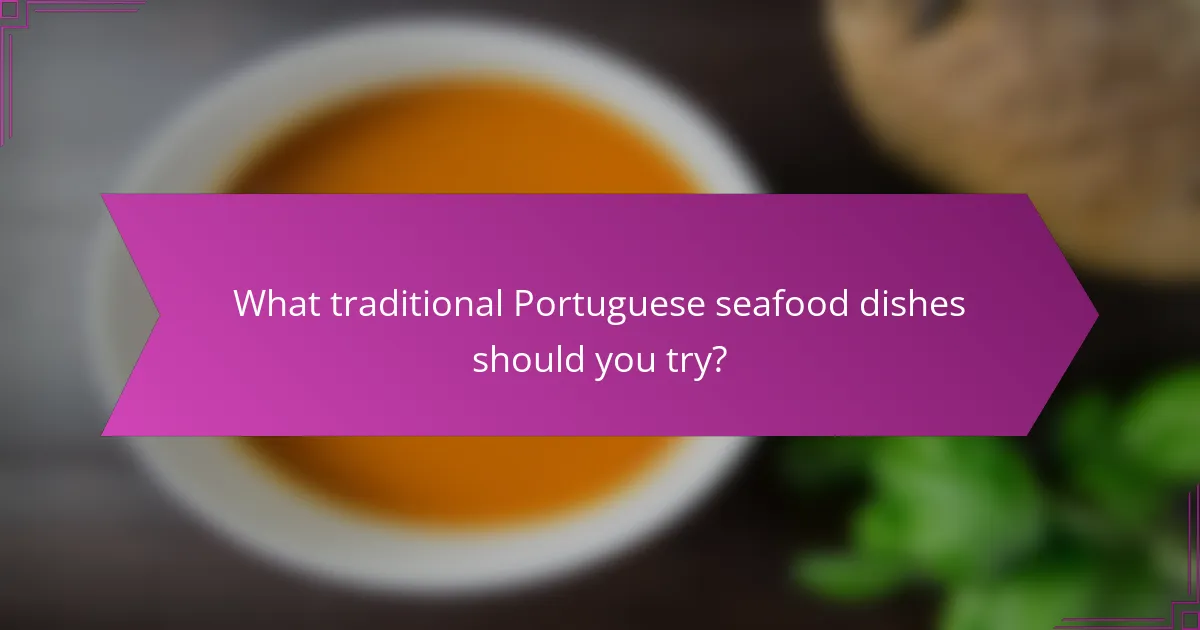
What traditional Portuguese seafood dishes should you try?
You should try bacalhau à brás, caldeirada, and cataplana. These traditional Portuguese seafood dishes showcase regional flavors and cooking styles. Bacalhau à brás combines salted cod with potatoes and eggs. Caldeirada is a hearty fish stew with various seafood and vegetables. Cataplana, cooked in a clam-shaped pot, features a mix of shellfish and spices, highlighting the unique culinary heritage of Portugal.
How is Bacalhau prepared and served in different regions?
Bacalhau is prepared and served in various ways across Portugal, reflecting regional traditions. In the north, bacalhau à Gomes de Sá features potatoes, onions, and olives. The Alentejo region offers bacalhau com grão, which combines chickpeas and spices. In the Algarve, bacalhau à brás mixes shredded cod with eggs and potatoes. Each preparation highlights local ingredients and cooking styles, showcasing the versatility of this beloved seafood.
What makes Caldeirada a staple in Portuguese households?
Caldeirada is a staple in Portuguese households due to its rich flavors and cultural significance. This traditional seafood stew embodies regional variations, showcasing local ingredients and cooking styles. Families often prepare Caldeirada using fresh catch, including fish and shellfish, combined with vegetables and aromatic herbs. The dish’s versatility allows it to be adapted based on available seafood, making it a beloved comfort food across Portugal. Its communal nature encourages sharing, reinforcing family bonds and culinary heritage.
Which unique seafood dishes are found in the Azores?
The Azores feature unique seafood dishes such as “Lapas,” grilled limpets served with garlic and butter, and “Polvo à Lagareiro,” octopus roasted with olive oil and garlic. Other notable dishes include “Bacalhau à Brás,” a codfish dish prepared with potatoes and eggs, and “Caldeirada,” a fish stew with various local fish and vegetables. Each dish highlights the region’s rich maritime culture and fresh ingredients.
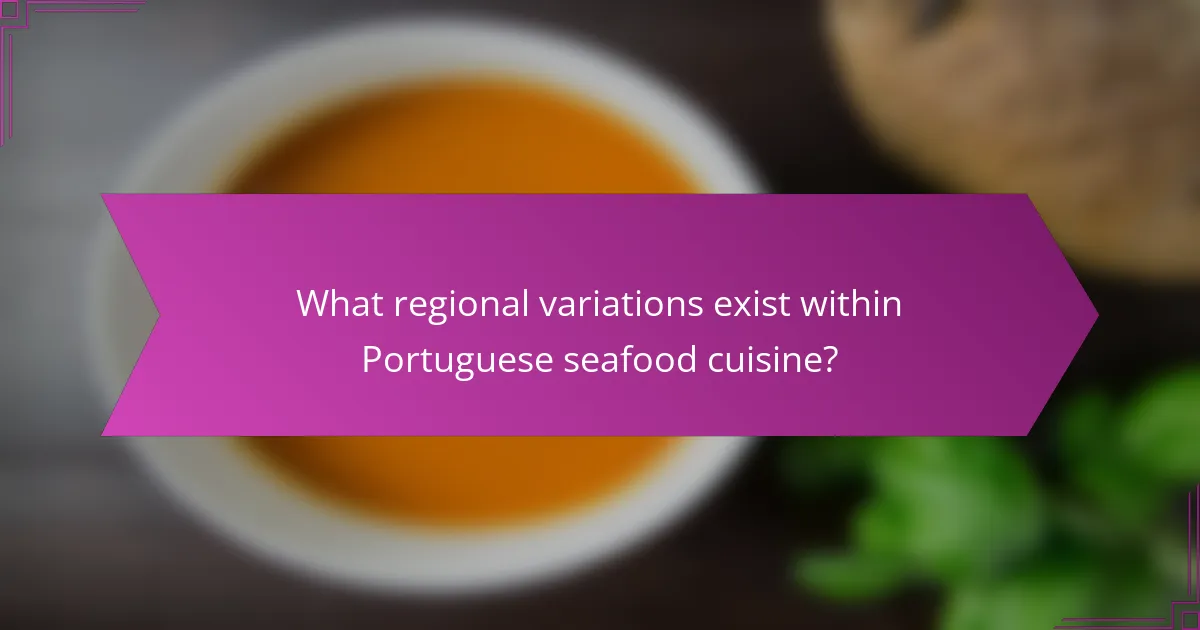
What regional variations exist within Portuguese seafood cuisine?
Portuguese seafood cuisine features significant regional variations that reflect local ingredients and traditions. Coastal areas like Algarve emphasize fresh fish dishes, while the Azores focus on unique seafood stews. In Lisbon, bacalhau, or salted cod, is a staple, showcasing the influence of preservation methods. Each region’s unique attributes contribute to a rich culinary tapestry, making Portuguese seafood diverse and flavorful.
How do coastal regions differ in their seafood offerings?
Coastal regions in Portugal offer diverse seafood dishes influenced by local traditions and available ingredients. Each region showcases unique cooking styles and flavors.
The Algarve is known for its grilled sardines and seafood rice, while the Azores emphasize fresh fish like tuna and swordfish. In Lisbon, bacalhau, or salted cod, is a staple, prepared in numerous ways. The northern regions favor shellfish, particularly in dishes like arroz de marisco.
These regional variations reflect the local culture and geography, showcasing the richness of Portuguese seafood cuisine.
What influences do historical trade routes have on regional seafood dishes?
Historical trade routes significantly influenced Portuguese seafood dishes by introducing new ingredients and cooking techniques. Coastal regions adapted their recipes based on the spices and fish varieties traded, creating unique regional variations. For example, the influence of the spice trade led to the use of exotic flavors in dishes like caldeirada. Additionally, maritime trade allowed for the incorporation of diverse seafood, such as octopus and sardines, into local cuisine, enhancing culinary diversity. This blending of cultures through trade routes shaped the rich tapestry of Portugal’s seafood heritage.
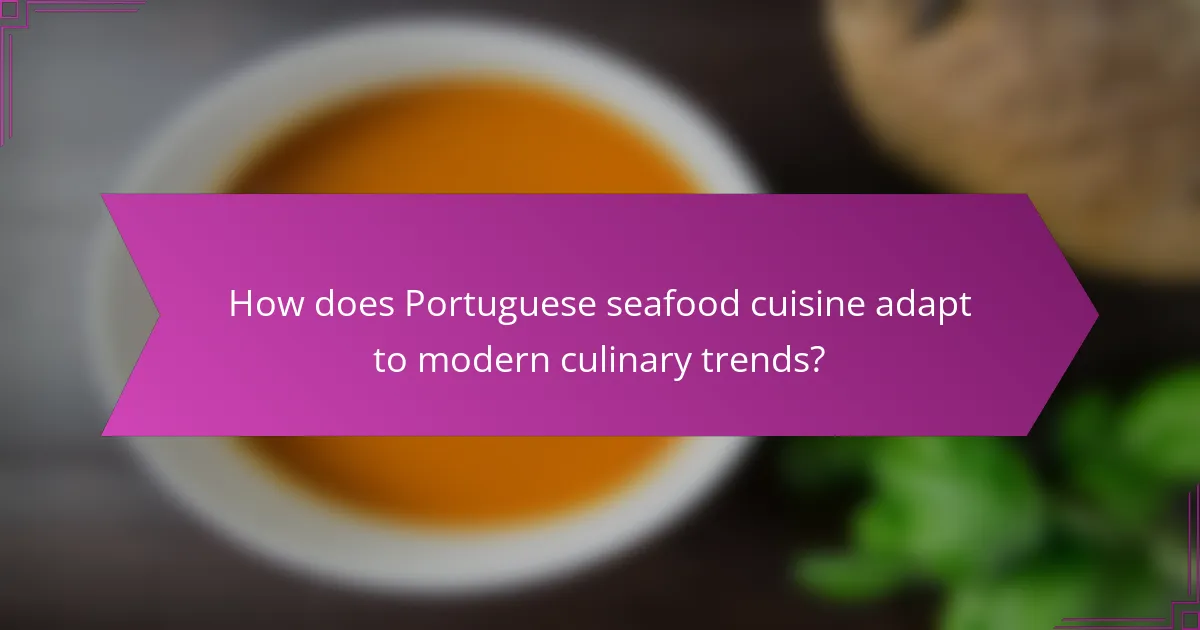
How does Portuguese seafood cuisine adapt to modern culinary trends?
Portuguese seafood cuisine adapts to modern culinary trends by incorporating innovative techniques and global flavors. Traditional dishes like bacalhau à brás are reimagined with contemporary presentations and fusion ingredients. Chefs emphasize sustainability, sourcing local seafood, and using seasonal produce. This evolution maintains the essence of Portuguese culinary heritage while appealing to modern palates. Regional variations showcase diverse influences, adapting classic recipes to reflect current dining preferences.
Which contemporary chefs are reinventing traditional seafood recipes?
Several contemporary chefs are reinventing traditional seafood recipes by incorporating innovative techniques and global flavors. Notable figures include Nuno Mendes, who emphasizes seasonal ingredients in his reinterpretations, and José Avillez, known for modernizing classic Portuguese dishes. Their approaches highlight the fusion of tradition and creativity, breathing new life into beloved recipes. Other chefs like Henrique Sá Pessoa and Marlene Vieira also contribute by exploring regional variations and sustainable practices, ensuring the evolution of Portuguese seafood cuisine.
What fusion dishes are emerging in urban areas?
Emerging fusion dishes in urban areas showcase innovative blends of traditional Portuguese seafood with global cuisines. Examples include seafood tacos featuring grilled bacalhau, and sushi rolls incorporating Portuguese chorizo. These dishes reflect a growing trend of culinary experimentation that honors cultural heritage while appealing to diverse palates.
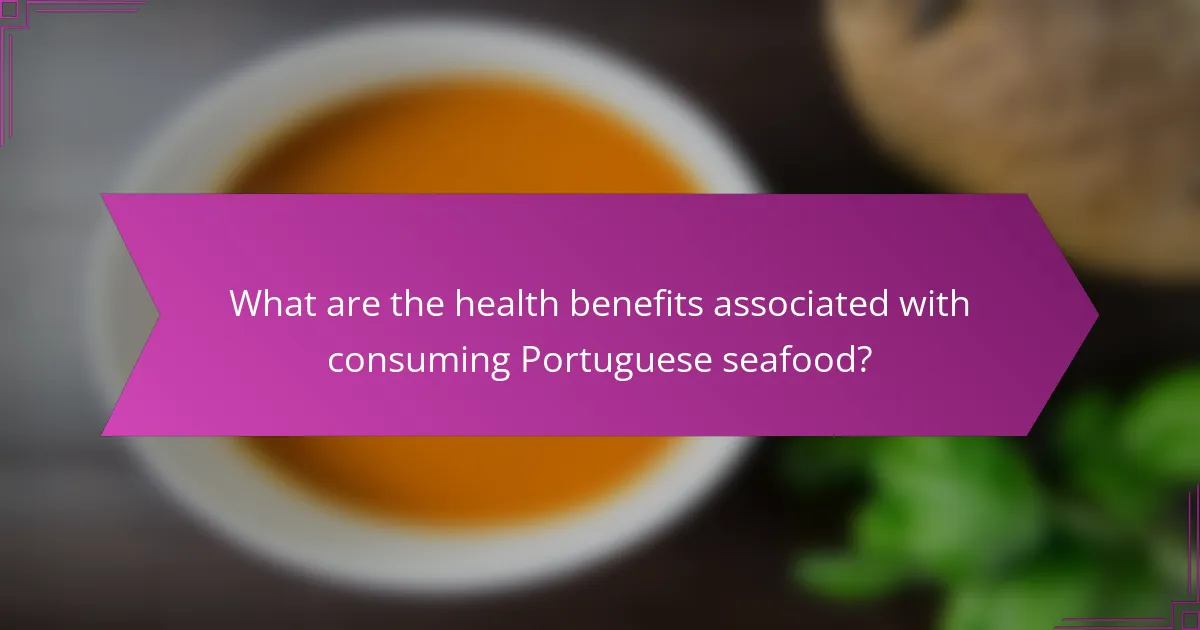
What are the health benefits associated with consuming Portuguese seafood?
Consuming Portuguese seafood offers numerous health benefits, including high omega-3 fatty acids and essential vitamins. These nutrients support cardiovascular health, enhance brain function, and reduce inflammation. Traditional dishes like bacalhau and caldeirada showcase diverse cooking styles, contributing to a balanced diet. Regional variations provide unique flavors and nutritional profiles, enriching the culinary experience.
Which nutrients are abundant in typical seafood dishes?
Portuguese seafood dishes are rich in nutrients such as omega-3 fatty acids, proteins, vitamins, and minerals. Common seafood like sardines and cod provide essential fatty acids that support heart health. Additionally, shellfish like clams and mussels are high in iron and vitamin B12, contributing to overall nutritional benefits. These dishes often incorporate fresh herbs and vegetables, enhancing their vitamin content.
How does seafood consumption contribute to a balanced diet?
Seafood consumption significantly contributes to a balanced diet by providing essential nutrients. Portuguese seafood dishes often feature fish and shellfish rich in omega-3 fatty acids, which support heart health. These dishes, including bacalhau and caldeirada, offer protein, vitamins, and minerals, enhancing overall nutrition. Regional cooking styles, such as grilling or stewing, preserve these nutrients while adding unique flavors. Incorporating a variety of seafood into meals promotes dietary diversity and aligns with healthy eating guidelines.
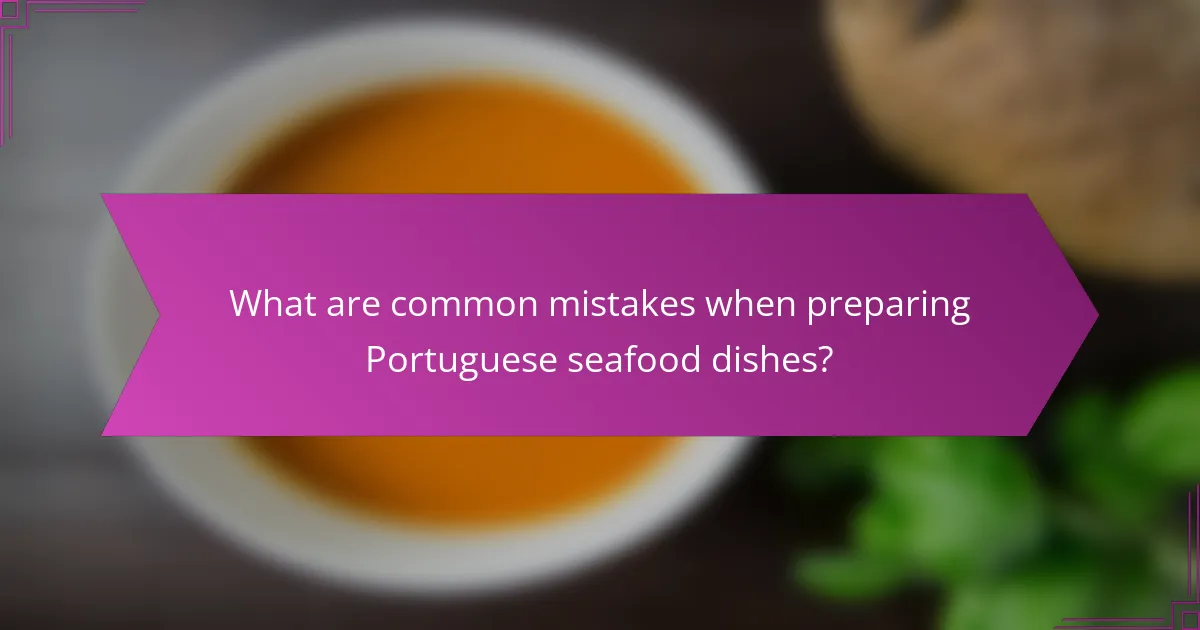
What are common mistakes when preparing Portuguese seafood dishes?
Common mistakes when preparing Portuguese seafood dishes include overcooking seafood, neglecting regional flavors, and using low-quality ingredients. Overcooking results in rubbery textures, while ignoring regional variations can lead to a lack of authenticity. Using fresh, high-quality seafood is essential for achieving the best flavor and texture. Additionally, failing to properly season dishes can diminish the overall taste. Understanding traditional cooking methods enhances the dish’s authenticity and appeal.
How can you avoid overcooking seafood?
To avoid overcooking seafood, monitor cooking times closely and use appropriate techniques. Cooking seafood requires precise timing; generally, fish should be cooked for about 10 minutes per inch of thickness. Use methods like poaching or steaming to retain moisture. Additionally, consider the unique characteristics of Portuguese seafood dishes, which often emphasize fresh ingredients and quick cooking styles. For example, traditional dishes like bacalhau à brás require just a few minutes of cooking to achieve optimal texture.
What tips ensure authentic flavor in traditional recipes?
To ensure authentic flavor in traditional Portuguese seafood dishes, prioritize fresh, local ingredients and traditional cooking methods. Use high-quality olive oil and season with sea salt to enhance natural tastes. Incorporate regional herbs like cilantro or parsley for depth. Embrace slow cooking techniques to develop rich flavors, and avoid over-processing ingredients to maintain their integrity.
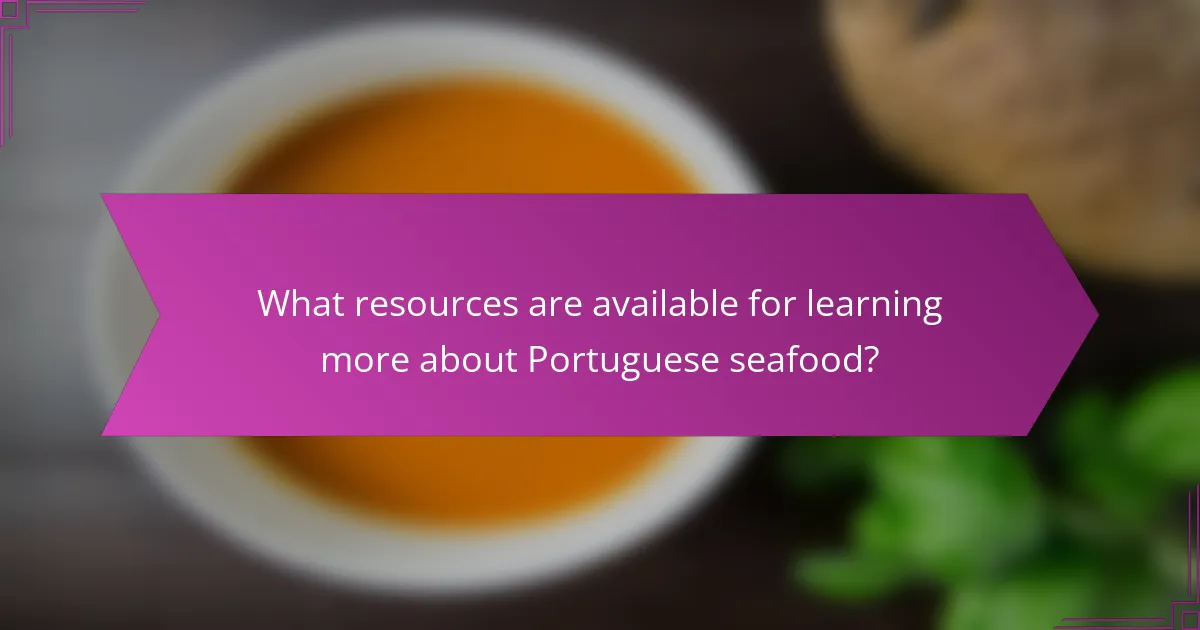
What resources are available for learning more about Portuguese seafood?
To learn more about Portuguese seafood, explore cookbooks, online courses, and local culinary tours. These resources provide insights into traditional dishes, cooking styles, and regional variations. Notable cookbooks include “The New Portuguese Table” by David Leite and “Portuguese Cooking” by Ana Patuleia Ortins. Websites like the Food Network and BBC Good Food offer recipes and cooking tips. Online platforms such as MasterClass provide video lessons from chefs specializing in Portuguese cuisine. Local markets and seafood festivals also offer firsthand experiences of Portugal’s seafood culture.
Which cookbooks focus on Portuguese seafood cuisine?
Several cookbooks focus on Portuguese seafood cuisine, highlighting traditional dishes and regional variations. Notable titles include “The New Portuguese Table” by David Leite, which offers authentic recipes and culinary insights. Another excellent choice is “Sea and Shore: A Portuguese Cookbook” by Barbara Santos, emphasizing coastal dishes. “Cuisines of Portugal” by Jean Anderson also explores diverse seafood preparations across regions. Lastly, “Portuguese Cookbook: A Culinary Journey” by Maria Dias showcases family recipes that celebrate seafood traditions.
What online platforms offer authentic recipes and cooking techniques?
Authentic recipes and cooking techniques for Portuguese seafood can be found on various online platforms. Websites like Epicurious, Food Network, and BBC Good Food offer traditional dishes and cooking styles. Additionally, regional variations are well-documented on culinary blogs such as Portugalist and The Spruce Eats. These resources provide diverse perspectives on authentic Portuguese seafood cuisine.
How can local markets enhance your seafood cooking experience?
Local markets significantly enhance your seafood cooking experience by providing fresh, regional ingredients. They offer access to a variety of local seafood, which is crucial for authentic Portuguese dishes. Freshness impacts flavor, ensuring dishes like bacalhau à brás or caldeirada are vibrant and delicious. Additionally, local markets often feature artisanal products, such as homemade sauces and spices, which elevate traditional recipes. Engaging with local vendors can also provide insights into cooking techniques and regional variations, enriching your culinary knowledge and skills.
